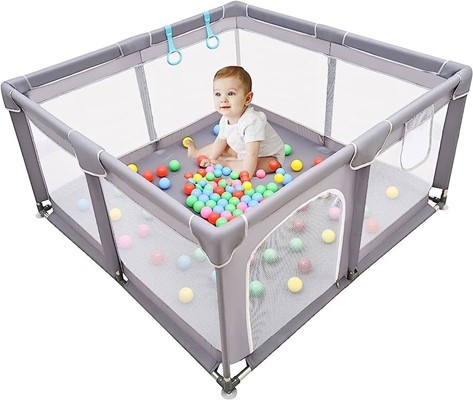The practical nurse (PN) is told that she keeps her 2-year-old child in a playpen so he will not get dirty. Which statement should the PN use in responding to this concern about using a playpen?
Overconcern about appearance can be harmful.
Playpens provide a sense of security for the child
Playpens provide a safe environment for a toddler.
Children need time to actively explore their environment.
The Correct Answer is D
- A playpen is a portable enclosure that provides a confined space for a child to play in. It can be useful for keeping a child safe and supervised when the caregiver is busy or needs a break, but it should not be used as a substitute for active play or interaction with the caregiver or others.
- A 2-year-old child is in the developmental stage of toddlerhood, which is characterized by rapid physical, cognitive, social, and emotional growth. Toddlers are curious and eager to learn about the world around them, and they need opportunities to explore, experiment, and manipulate objects and materials. They also need stimulation, guidance, and feedback from their caregivers and peers to develop their language, problem-solving, and social skills.
- Keeping a 2-year-old child in a playpen for long periods of time or to prevent them from getting dirty can have negative effects on their development and well-being. It can limit their physical activity, creativity, and independence, and it can cause boredom, frustration, or resentment . It can also interfere with their atachment and bonding with their caregiver, as well as their self-esteem and self-image.
- Therefore, the practical nurse (PN) should use the statement "Children need time to actively explore their environment" in responding to this concern about using a playpen. This statement reflects the developmental needs and rights of the child, and it encourages the caregiver to provide a more stimulating and supportive environment for the child. It also implies that getting dirty is not a problem, but rather a natural and healthy part of play and learning.
- Therefore, option D is the correct answer, while options A, B, and C are incorrect. Option A is incorrect because it is judgmental and may offend or discourage the caregiver.
Option B is incorrect because it is not true that playpens provide a sense of security for the child, as they may feel isolated or restricted in them.
Option C is incorrect because it is not true that playpens provide a safe environment for a toddler, as they may pose hazards such as entrapment, suffocation, or injury from falling or climbing out of them.

Nursing Test Bank
Naxlex Comprehensive Predictor Exams
Related Questions
Correct Answer is B
Explanation
A. Elevate the right leg above heart level. This is contraindicated for the adolescent because elevating the leg above heart level can increase blood pressure in the injured area and worsen bleeding and swelling.
B. Prepare the adolescent for surgery. This is anticipated for the adolescent because they have an open fracture with bone displacement, which requires surgical intervention to reduce the risk of infection and complications.
C. Remove the splint. This is contraindicated for the adolescent because removing the splint can cause further damage to the bone and soft tissues and increase pain and bleeding.
D. Apply ice to the affected extremity. This is contraindicated for the adolescent because applying ice can decrease blood flow to the injured area and impair healing and sensation.
Correct Answer is D
Explanation
A. This choice is incorrect because an older adult client who reports constipation of 4 days is not an urgent situation that requires immediate attention. The nurse should assess the client's hydration status, bowel habits, and medication use, and provide education on dietary and lifestyle modifications to prevent constipation.
B. This choice is incorrect because a preschooler who has a skin rash is not an urgent situation that requires immediate attention. The nurse should assess the type, location, and distribution of the rash, as well as any history of allergies, exposure, or infection, and provide appropriate treatment and education.
C. This choice is incorrect because an adolescent who has a closed fracture is not an urgent situation that requires immediate attention. The nurse should assess the site of injury, neurovascular status, pain level, and immobilization device, and provide analgesia and education on fracture care.
D. This choice is correct because a middle adult client who has unstable vital signs is an urgent situation that requires immediate attention. The nurse should assess the client's level of consciousness, airway, breathing, circulation, and possible causes of instability, and initiate life-saving interventions.
Whether you are a student looking to ace your exams or a practicing nurse seeking to enhance your expertise , our nursing education contents will empower you with the confidence and competence to make a difference in the lives of patients and become a respected leader in the healthcare field.
Visit Naxlex, invest in your future and unlock endless possibilities with our unparalleled nursing education contents today
Report Wrong Answer on the Current Question
Do you disagree with the answer? If yes, what is your expected answer? Explain.
Kindly be descriptive with the issue you are facing.
